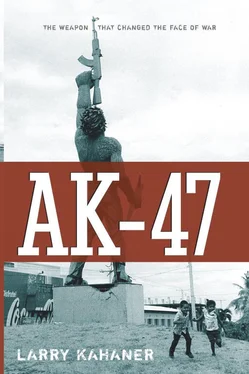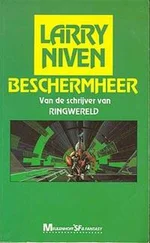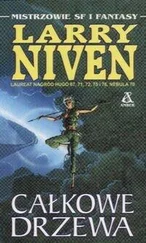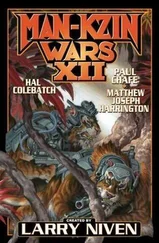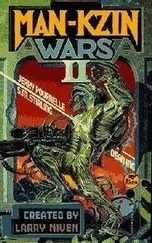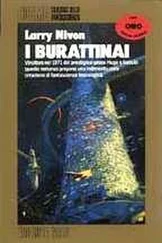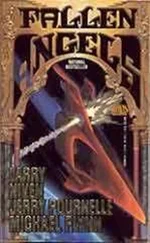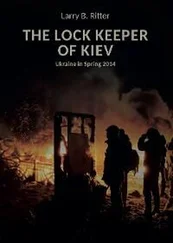Larry Kahaner - AK-47
Здесь есть возможность читать онлайн «Larry Kahaner - AK-47» весь текст электронной книги совершенно бесплатно (целиком полную версию без сокращений). В некоторых случаях можно слушать аудио, скачать через торрент в формате fb2 и присутствует краткое содержание. Город: Hoboken, Год выпуска: 2007, ISBN: 2007, Издательство: John Wiley & Sons, Inc., Жанр: История, military_history, на английском языке. Описание произведения, (предисловие) а так же отзывы посетителей доступны на портале библиотеки ЛибКат.
- Название:AK-47
- Автор:
- Издательство:John Wiley & Sons, Inc.
- Жанр:
- Год:2007
- Город:Hoboken
- ISBN:9780470315668
- Рейтинг книги:3 / 5. Голосов: 1
-
Избранное:Добавить в избранное
- Отзывы:
-
Ваша оценка:
- 60
- 1
- 2
- 3
- 4
- 5
AK-47: краткое содержание, описание и аннотация
Предлагаем к чтению аннотацию, описание, краткое содержание или предисловие (зависит от того, что написал сам автор книги «AK-47»). Если вы не нашли необходимую информацию о книге — напишите в комментариях, мы постараемся отыскать её.
AK-47 — читать онлайн бесплатно полную книгу (весь текст) целиком
Ниже представлен текст книги, разбитый по страницам. Система сохранения места последней прочитанной страницы, позволяет с удобством читать онлайн бесплатно книгу «AK-47», без необходимости каждый раз заново искать на чём Вы остановились. Поставьте закладку, и сможете в любой момент перейти на страницу, на которой закончили чтение.
Интервал:
Закладка:
The lesson of Vietnam is that determined soldiers with simple, reliable arms can beat a well-trained military force despite its sophisticated weapons, like the M-16. In the years that followed the Vietnam War, the larger-than-life AK spread around the globe, giving power and prestige to ad hoc armies, thugs, and terrorists who would change the face of the world forever.
3
PANDORA’S BOX
BY THE LATE 1970s, the Soviet Union was ramping up for what its leaders mistakenly thought would be a quick war in Afghanistan. At first the AK seemed to be one of the superpower’s main military assets, but the rifle later proved to be in part responsible for its defeat. The catastrophic Soviet defeat following a ten-year guerrilla war eventually led to the breakup of the Soviet Union and the proliferation of cheap AKs throughout the Middle East.
The Vietnam War gave the AK its credibility, and the Afghanistan war would spread it around the region, placing it in the hands of terrorists and insurgents who embraced it as the budding icon of anti-imperialism.
The war that Soviet president Mikhail Gorbachev later called “our country’s Vietnam” had roots as far back as the 1920s, when Afghanistan became the first nation to recognize the newly minted Soviet Communist regime after the Bolshevik Revolution. The two nations shared a common border and maintained friendly relations. Soviet aid and advisors were a constant feature in Afghanistan for the next fifty years. During the cold war, both East and West curried favor with the Afghans. The Soviets, for example, built a large irrigation project south of Jalalabad, and the United States constructed roads and an airfield at Kandahar.
By the 1970s, Communism was growing worldwide, boosted by the U.S. defeat in Vietnam. Other countries such as Cambodia, Laos, Angola, Mozambique, and Ethiopia turned Communist. In Cuba, the Communist revolution under Fidel Castro was stronger than ever despite CIA efforts to shake his hold. The Soviet Union was spreading its Marxist doctrine to the Congo, Egypt, Syria, and Latin America.
In April 1978, members of the Marxist People’s Democratic Party of Afghanistan (DRA) assassinated Prime Minister Sardar Mohammed Daoud Khan during a coup supported by the Soviet Union. Although the new government enjoyed popular support, it was poorly organized and run. The following year, unknown assassins (presumably encouraged by Prime Minister Hafizullah Amin) smothered President Nur Muhammad Taraki in his sleep and Amin became president. Amin was warm to Soviet help but not as willing as his predecessor to be the superpower’s puppet.
By the fall of 1979, the Soviet Union had set its sights on taking over Afghanistan by military force. Although many reasons have been suggested for an invasion, ranging from helping a neighboring Communist regime to a closer military presence in the Persian Gulf area where the world’s oil tankers traveled, the situation in nearby Iran was also a factor. The country was in the midst of an Islamic revolution, throwing out the corrupt U.S.-backed government of Mohammed Reza Shah Pahlavi, the Shah of Iran, and installing the Islamic hard-liner Ayatollah Ruhollah Khomeini. Although the new regime was an enemy of the United States, it was not friendly to the Soviet Union either and presented another loss of influence to the Soviets and little hope of Communist inroads.
On Christmas Eve 1979, the Soviet army, with planning help from the DRA, rolled three divisions across the border and quickly took control of airfields around Kabul as well as the telecommunications infrastructure. In a set of clever ploys, Soviet advisors hosted a party for Afghan government leaders at the InterContinental Hotel in Kabul, and Soviet military advisors held a similar fete for upper-level Afghan military officers. At the conclusion of both galas, all the Afghan guests were taken prisoner. That same day, Soviet soldiers dressed as Afghan soldiers stormed the presidential palace, killing President Amin. Within days, more than fifty thousand Soviet troops were in Afghanistan, with all the major cities under their control.
Strategically, the invasion had been brilliant, with only sixty-six Soviet soldiers killed, most of them due to non-combat-related accidents. The Soviet strategy was to maintain control of major cities with their own forces and have the Afghan army seek out and destroy rural-based opposition groups, known as mujahideen, who were scattered throughout the countryside, mainly in the mountains. Soviet planners, elated by a quick victory and little resistance, anticipated a stay of no more than three years.
The mujahideen, which literally means “strugglers” in Arabic but also translates as “holy warriors,” sought U.S. assistance against the Soviet invaders. They opposed the Soviets largely on nationalistic grounds; they were not willing to be taken over by any outside force. They also garnered strong support from influential local imams for whom the Marxist ideology of atheism was abhorrent. Hundreds of small bands were formed. Even some DRA soldiers joined the mujahideen fighters.
President Jimmy Carter authorized the CIA to supply the mujahideen with weapons and funds for their fight against the Soviets. The weapons would be funneled through Pakistan, which was uneasy about having the Soviets next door in Afghanistan. Moreover, as the war continued and the Soviets bombed and destroyed rural villages, millions of Afghans found themselves living in refugee camps bordering Pakistan and Iran, which made it difficult if not impossible to maintain the borders’ integrity. Both nations supported the mujahideen movement.
The Soviets with their tanks, airpower, and AKs vastly outgunned the mujahideen, who were relegated in the early years to whatever weapons they could scrounge or take from captured Soviet convoys and army caches. Their situation changed for the better when one of the first CIA shipments arrived, less than two weeks after the Soviet invasion, containing thousands of bolt-action .303 Lee-Enfield rifles, the British counterpart of the venerable but outmoded M1. Howard Hart, who was the CIA’s chief in Pakistan, believed that the old Enfield rifles were superior to the Soviet AK. Orders went out to sources in Greece, India, and wherever else they could be found for delivery to Karachi. The CIA also shipped rocket-propelled grenade launchers, portable enough for guerrillas to carry in the field, and capable of stopping a Soviet tank.
The Soviets fought using the methods expected of any large army of the day. In many respects, they mimicked the U.S. program in Vietnam. They delivered massive firepower from bombers, helicopters, fixed artillery, and tanks upon a town, completely dominating the area, and then dispatched ground troops who fired their AKs at anything that moved until the town fell under their control. Mopping up was largely unnecessary because the massive shellings took care of any resistance save a few stragglers. The Soviets’ scorched-earth strategy was considered a form of “migratory genocide.” By destroying villages and forcing people into exile, they hoped to sap the rural support that fed the mujahideen.
Initially, the outgunned mujahideen were shaken by the Soviet tactics and the firepower delivered by a new version of the AK that was making its way onto the battlefield. The mujahideen so feared this mysterious this new rifle and its odd-sized cartridge that they called it “poison bullet” because of its almost supernatural destructive power. The new bullet was not only smaller than previous AK rounds, many of which the mujahideen had captured during raids, but it was also more deadly—even more so than the M-16 round that had prompted its development.
Soviet weapons designers had taken note of the small, high-velocity 5.56mm bullet used in the M-16 when they saw firsthand in Vietnam its destructive bone-cracking power. The truth was that Soviet military officials were not completely happy with the AK, and they were looking for a change. Although the intermediate round was a major step forward, many troops could not keep the rifle on target during full automatic fire because of the strong recoil.
Читать дальшеИнтервал:
Закладка:
Похожие книги на «AK-47»
Представляем Вашему вниманию похожие книги на «AK-47» списком для выбора. Мы отобрали схожую по названию и смыслу литературу в надежде предоставить читателям больше вариантов отыскать новые, интересные, ещё непрочитанные произведения.
Обсуждение, отзывы о книге «AK-47» и просто собственные мнения читателей. Оставьте ваши комментарии, напишите, что Вы думаете о произведении, его смысле или главных героях. Укажите что конкретно понравилось, а что нет, и почему Вы так считаете.
